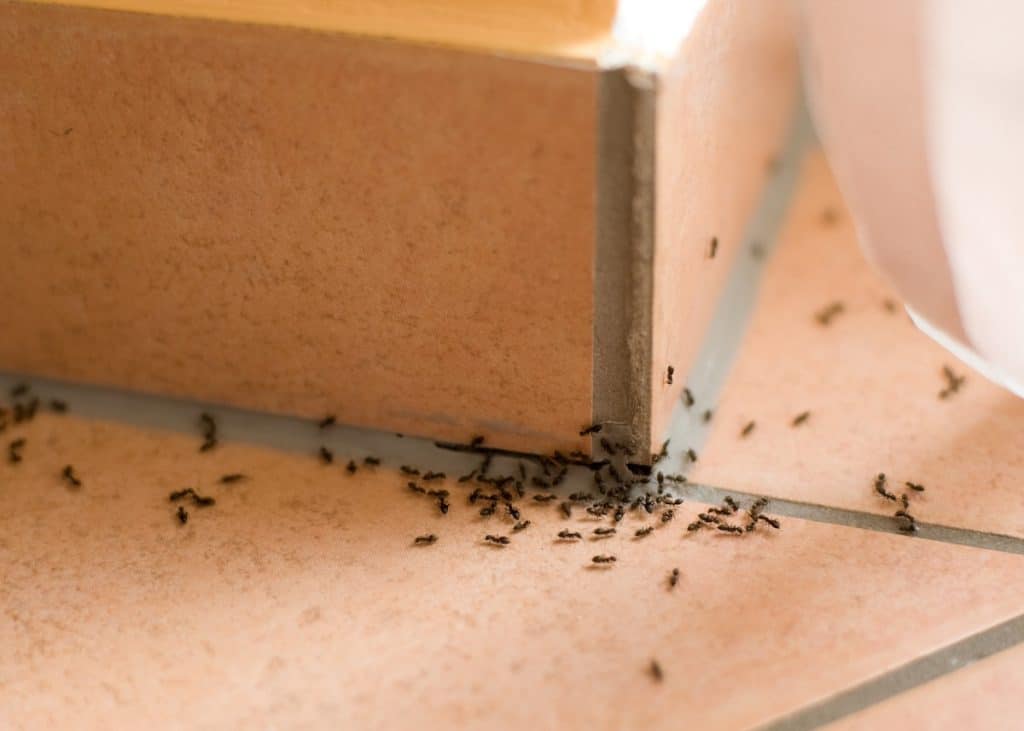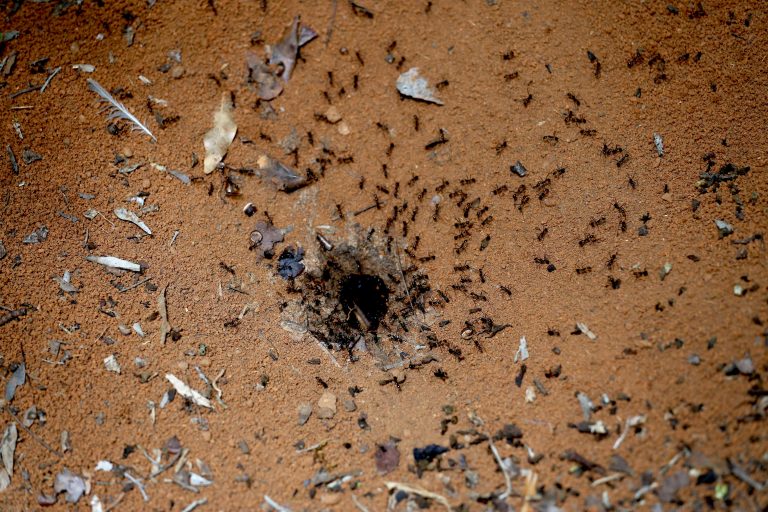You’ve probably seen a trail of tiny insects marching across your countertop like soldiers on a mission. And that mission? It’s your kitchen. But why are these critters so obsessed with invading this specific part of your home?
The answer is simple: food and water. Your kitchen offers everything a pest needs to survive. Crumbs, spills, sticky containers, pet food, and even a dripping faucet can act like a five-star buffet for these persistent invaders. Sugar ants, in particular, are attracted to anything sweet, while others go for grease, proteins, and even moisture.
It’s not just about what’s out in the open either. Even sealed containers can leak microscopic traces of food, and ants have highly sensitive smell receptors. Once one scout finds something good, it leaves a pheromone trail that tells the rest of the colony to follow.
How They Slip Inside
You might be wondering how these unwanted visitors even get into your home in the first place. The truth is, they don’t need much of an opening. Tiny cracks in your foundation, gaps around windows or doors, and utility line entry points all act like wide-open doors to an ant.
Their small size and sheer determination make sealing every possible entrance nearly impossible. A single explorer can travel far from the nest looking for food, and once it finds your kitchen, the message spreads fast.
Sometimes, these bugs nest outdoors but venture indoors for resources. In other situations, during cooler months or dry spells; they might settle inside your walls, under floors, or behind cabinets.
Common Kitchen Habits That Invite Trouble
There are a few everyday habits that could be making your kitchen irresistible to pests without you even realizing it.
- Leaving dirty dishes in the sink: Even a thin layer of sauce or a few crumbs can become a beacon overnight.
- Not wiping counters thoroughly: Insects can detect the tiniest residue of sugar or oil, even if your surfaces look clean.
- Poorly sealed food: Cereal boxes, snack bags, and baking ingredients should all be stored in airtight containers.
- Overflowing or leaking trash: A full bin with food waste is a massive attractant. Be sure to check the inside edges and base for spills.
- Pet food bowls left out: These are often left on the floor all day, and ants see them as easy pickings. Try placing pet bowls in a shallow dish of water moat pests can’t cross.
Why DIY Solutions Often Fall Short
So, you’ve tried vinegar sprays, cinnamon, or store-bought bait traps. Maybe they worked for a bit until the problem returned. That’s the catch with DIY pest control. It might kill the invaders you see, but it rarely eliminates the entire nest.
A single colony can house thousands of ants, and many types have multiple queens. If they sense a threat, they can bud splitting into new colonies that spread throughout your home.
Plus, commercial sprays usually only offer temporary relief. Ants are incredibly adaptable and will often change entry points or food sources. Misidentifying the species can also lead to using the wrong tactic.
When to Bring in the Experts

If you’re spotting trails every day despite cleaning up, sealing cracks, and using over-the-counter products, it’s probably time to escalate your efforts. Here are signs that professional help is the smart next move:
- You see foraging trails consistently over several days.
- The same access points keep being exploited.
- You’ve found them in multiple areas of your home.
- Home remedies haven’t worked or have backfired.
At that stage, it’s no longer just about prevention; it’s about complete elimination. You’ll want someone who knows how local species operate and how to treat them from the source. Get rid of pests fast with experienced exterminators in Nashville from All American Pest Control.
Keep Ants Out for Good
After treatment, it’s crucial to break the cycle for good. Seal off access points around windows, doors, and pipes. Fix plumbing leaks and reduce moisture inside your home. Store pantry items in airtight containers, clean up pet food promptly, and take out the trash daily. Don’t forget the less visible places like under appliances; where crumbs tend to gather. Small, consistent actions can make your home less inviting to pests.
Know Your Enemy: Types of Ants
Different species have different behaviors. Carpenter ants, for instance, don’t just eat your crumbs, they can burrow through wood, damaging your home. Pavement ants nest under driveways or concrete slabs, while pharaoh ants are notorious for spreading through hospitals and apartment buildings.
Knowing the species is essential. What works on sugar ants might fail with pharaoh ants, and carpenter ants may need more aggressive treatment, including checking for structural damage. A professional can accurately identify the type you’re dealing with and craft a strategy to eliminate them efficiently.
Don’t Let It Spiral
Minor pest issues rarely fix themselves. They tend to escalate. Colonies grow, new trails form, and soon your kitchen isn’t the only room affected. What starts as a few insects near the sink can become an overwhelming invasion involving your pantry, bathroom, and even your walls. Taking action early saves stress, time, and potentially costly repairs.
You don’t have to coexist with these unwanted guests. With smart prevention, cleaner habits, and expert support when needed, your kitchen can stay pest-free year-round.













